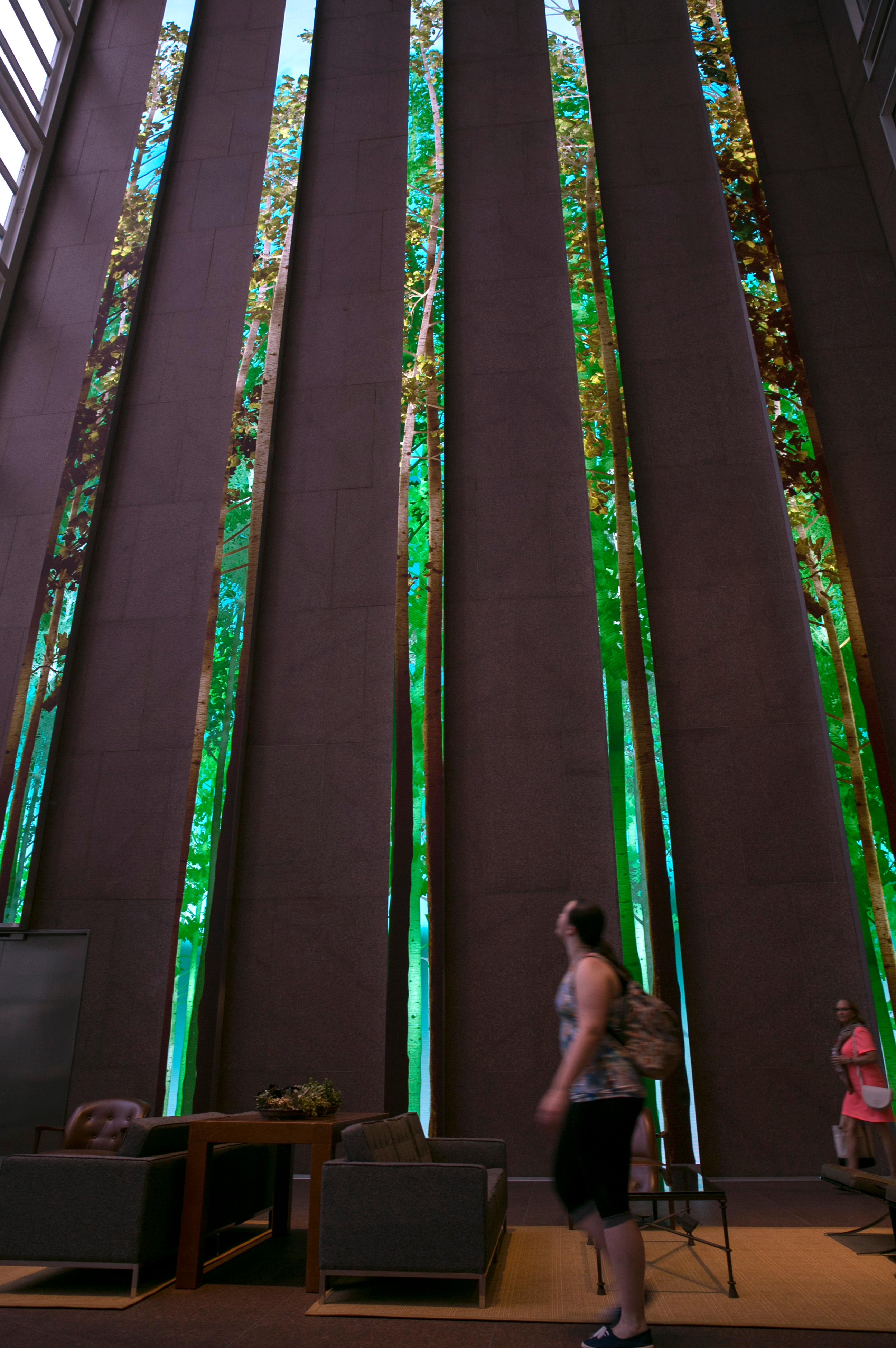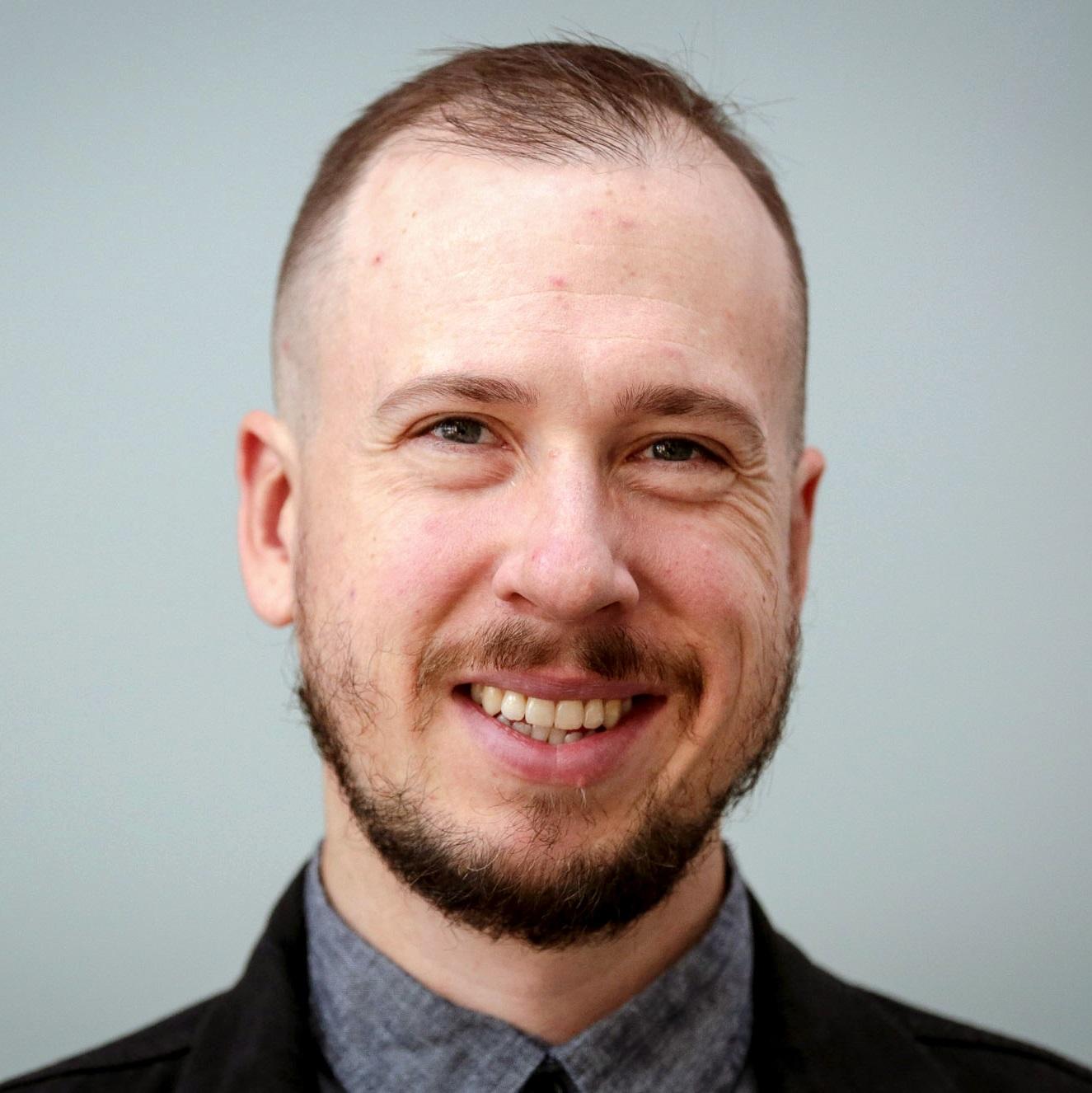
This story is part of a reporting project to understand public art in Colorado, how it's funded and the impact it has.
You’re likely to see more art out in public these days. That’s partly because the economy is more stable. And it's a way to attract more people to downtowns across the country, including in Denver. Even private businesses are having art made for their public spaces.
Take Brookfield Office Properties, which recently brought five inflatable rabbits to the Mile High City for two weekends in June. Australian artist Amanda Parer made the sculptures and calls the traveling series "Intrude." It’s a nod to how rabbits are perceived in Australia.
“Both being a very cute, huggable animal and at the same time, because they were brought over as an invasive species, they are wreaking havoc on the landscape in Australia,” says Debra Simon, vice president of Arts Brookfield -- the cultural arm of Brookfield Office Properties.
Brookfield owns two buildings in Denver: Republic Plaza and 1801 California. The giant rabbits were installed outside these spots.

summer concert series featuring performances by Colorado musicians every Wednesday in July.
“More people are spending more time at work, and work and your personal life are blending,” Simon says. “I see there’s more of a desire to have an animated workspace.”
But when it comes to budgets and how much money the company invests in its art, Arts Brookfield is vague.
“It’s a significant amount of money,” Simon says. “We spend the money it takes to do things that have the right content and that are the right image for our company.”
Arts Brookfield spends more than $1 million a year to host exhibitions and concerts around the world, according to a spokesperson. That means more than 500 days of free public events. But it turns out sometimes the artists don’t get paid for their visual works beyond the costs of materials.
“It’s unfortunately very common in the field,” Denver curator Cortney Lane Stell says. “The organizations, non-profit or for-profit, are benefiting from this programming, and they’re not valuing the labor by not paying for it.”
Stell oversees pop-up exhibitions for Black Cube, a Colorado organization that also brings art to public spaces. Black Cube’s current exhibition “ROAM” will travel to three sites across metro Denver. It’s a large neon sculpture by Detroit artist Jon Geiger that alludes to iconic objects found in the American West.
“The more opportunities artists are afforded to sustain their practices, the more opportunities that we have to better reflect on our world,” Stell says.
New Art At The 'Cash Register Building'
If you want even more art, just walk two blocks west from Republic Plaza to Denver’s most recognizable skyscraper: The Wells Fargo Center. You may know it as the “cash register building” -- a popular reference to its shape.

Beacon Capital Partners bought the building in 2012. Last month, the real estate firm unveiled a $17 million makeover. It includes a fitness center, courtyard, new lobby lights, furniture and a permanent art collection.
“Because of the huge ceilings, the vastness of it, it really felt like a museum,” vice president Cathy Mossman says. “So it was calling for art and something to just enliven it.”
She would not give specifics about how much money went to the art other than to say, "A portion of it."
The atrium wall has five strips of digital works that go eight stories high. Created by a New York City firm ESI Design, the LED screens show animations like a flock of birds, clouds and a forest. Another image depicts the Rocky Mountains with pixels made up of crowd sourced Instagram photos.
ESI Design founder Edwin Schlossberg calls it “media architecture.”
“In a sense it feels like you’re looking through the building out to the world, like these are windows,” he says.
These are high-tech installations hooked up to sensors outside that trigger the color and activity based on things like weather. So when the wind blows, trees on the screens sway.
“This whole thing was composed in a sense as an experience of the dynamic, interdependent world that we live in in this very large, still space,” Schlossberg says.

Beacon Capital Partners also commissioned 14 paintings and five sculptures by New York City artist Enoc Perez.
“The subject of my work is mostly architecture,” Perez says.
The works he made for the cash register building were inspired by its American architect Philip Johnson. The paintings are an abstract take on the building’s shape. And the brass sculptures mimic the finishes that the architect used.
Perez is happy to have the work. But he says the commission is kind of a catch-22.
“It’s great that they’re acknowledging that art is important to the wellbeing of the people that are in their buildings,” he says. “It’s also a way for them to get better tenants, so I’m aware of what it is.”
Cathy Mossman of Beacon Capital Partners said that attracting good tenants is important to the business.
Who Picks Public Art?
New York City is one place where corporations and organizations have brought more art to public spaces.
In December, New York Magazine senior art critic Jerry Saltz penned a piece called “How New York Solved The Problem Of Public Art.”
“Ninety-nine percent of all public art is crap,” Saltz told CPR News. “A lot of it in my opinion has to do with the way art is picked. That means bureaucracy.”
Saltz points to how city public art programs usually appoint committees to choose the installations. Those panels often have people from different backgrounds, and Saltz believes that waters down the art that they pick. On the other hand, private entities rely on individual curators that have expertise.
Saltz admits he's a man of paradox. The critic says that despite the selection process, he wants more public art commissioned by cities.
“Why more? Because the chances go up that the right curator and the right artist and the right sponsors get something right,” Saltz says.
Saltz says the High Line in New York City is an organization that gets its public art right. It’s an old rail line that’s been turned into an above ground park. The High Line is mostly privately funded. Some of its dollars go to art picked by curator Cecilia Alemani -- who Saltz describes as the country’s best curator of public art right now.
“She is finding a way to pick good art that also communicates to the public,” Saltz says. “And what’s essential above all is trust.”
The Cultural Life Of The City
In Denver, the inflatable rabbits of “Intrude” are now gone. But there’s more art inside the Republic Plaza building. The exhibition “PeopleScapes” has paintings, photographs and other works that explore the human figure.
Arts Brookfield turned to local curator Andra Archer to help with the show. She started consulting with Colorado companies more than 30 years ago.
Businesses investing in art collections is not new. Just look at Kaiser Permanente, Benson Mineral Group and various law firms, Archer says. But she adds that companies collect more art when they have more money.
“When the economy suffers, then art is one of the first things people tend to let go by the wayside,” Archer says.
Archer says what makes Arts Brookfield unique is its rotating exhibitions and events. The foundation often works with local curators when it hosts events in different cities. That way the local curator can draw from regional talent when choosing art for all to see.
“PeopleScapes” runs in the Republic Plaza lobby through August 17. Many of the artists are from Colorado, like Jerry De La Cruz, Karen Fisher and Daisy Patton. Most of the works are for sale. And those behind Arts Brookfield hope the public sees the works too.
“What we want to do is get people comfortable around art so that they will want to then participate in the cultural life of the city,” Debra Simon of Arts Brookfield says.








